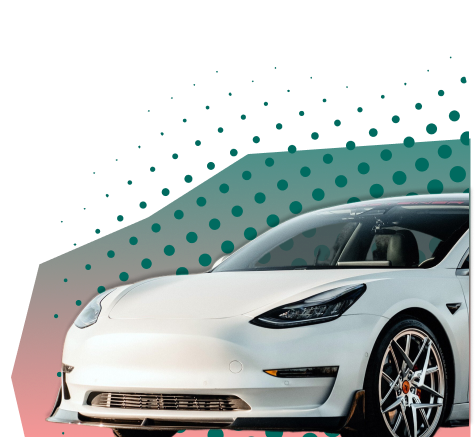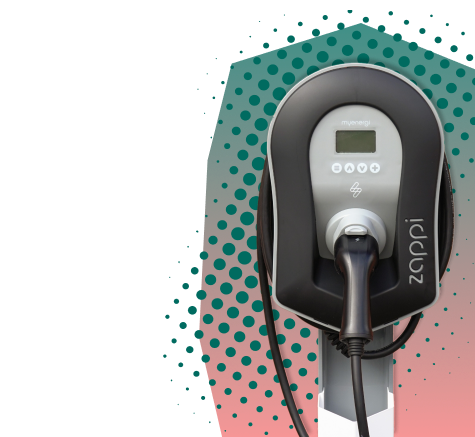Electric Revolution Accelerates
In the past decade, the mobility sector has been going through a significant change, accelerating forward faster than we have ever seen before. Electric Vehicles have been a player at the forefront of this transition, redefining how we think about mobility in general. Being able to get from point A to point B is something a majority of us have to think about daily, and the transition going on in the mobility sphere changes our perspective on exactly how we are doing it.
The past few years meant tremendous growth for the electric vehicles market. Tightening fuel economy, tailpipe CO2 standards, and ambitious goals to meet net zero emissions between 2030 and 2050 play a significant role in boosting EV sales. In 2022, many countries around the globe introduced policies related to transportation aimed at curbing the consequences of the climate crisis, such as the European ban on internal combustion engines from 2035 onwards and the US Inflation Reduction Act of 2022.
Traditional car manufacturers are introducing more models into their cohorts, with some who decided to switch completely from ICE to EVs in the near future. Although there are a few barriers to the widespread adoption of electric vehicles, such as issues with semiconductor chip shortages, batteries, or lack of sufficient charging infrastructure, 2023 looks promising for the electric vehicles market. So much so that we decided to come up with five trends that might rule the market in the upcoming year. Ready to explore?
 The Future Is Electric: Five Electric Vehicles Market Trends in 2023
The Future Is Electric: Five Electric Vehicles Market Trends in 2023
Trend 1: Production of EVs continues to grow
With a higher demand for electric vehicles, their production around the world will continue to increase. As of now, China is leading in terms of production, claiming 76% of the global market share in 2021, followed by Europe with 16% and US in 8%. Currently, only 4% of North American car production belongs to EVs, but with recent changes in policies around the globe, that is posed for a change. Many locations are amping up their production capacity to supply the demand for electric cars, and although there might be some challenges to that, for example, the shortages in semiconductor chips, manufacturers are looking for ways to expand manufacturing whenever possible. Related to that, manufacturers are also trying to expand the battery production capacities and are experimenting with new chemistries other than lithium-ion due to the increase in the pricing of raw materials.
Trend 2: New Models are on their way
As the popularity of EVs increases, more models will be available in the market. The first segment of vehicles that will see the biggest influx will be crossover SUVs and SUVs because they’re currently the most popular consumer choice. The necessity of small urban models rises, which will see enough development soon enough. Although there are already some small models available, it’s not a surprise that manufacturers are most keen to first invest in electrified SUVs than any other type of car. Once these break the first ice, more types of models will be available on the market for consumers to purchase.
Trend 3: EV range continues to expand
As battery technology continues to improve, the range of electric vehicles expands as well. As of right now, the average range of EVs is 341 kilometers, but models such as Mercedes EQE, BMW iX xDrive, Fiscker Ocean, BMW i7 xDrive, Lotus Eletre, Audi Q8 E-Tron, Tesla Model S, Lightyear 0 and Lucid Air can go above 500 km on one charge in optimal conditions. Although these alone cannot solve the so-called “range anxiety”, the improvements in charging infrastructure will mean that taking a long trip in an electric car will not only be feasible but also will shorten the travel time to reach near parity will internal combustion engines very soon.
Trend 4: Charging infrastructure will improve
Equal and easy access to charging points for electric vehicles will propel the electric revolution in the upcoming years. Not only availability of public charging points will be necessary for both ultra-fast and slow chargers, but also the accessibility of charging at home and in apartment buildings. Energy companies, charging operators, and policymakers are working together to improve the access to charging points around the world. For example, in 2022, the UK rolled out a scheme aimed at helping local governments, workplaces, and more build out the infrastructure necessary to power the electric cars that drive on the roads today and tomorrow. Improvements in payment systems and network solutions will help to keep drivers satisfied. In 2023, as the demand for EVs and sustainability as a whole continues to increase, we can expect more movement in the EV charging infrastructure.
Trend 5: EVs are becoming a part of the grid
In 2023, we can expect a roll-out of more integrated EV-to-Grid solutions than before. From Vehicle to Grid (V2G) which means EVs can be supporting the grid, to EVs being able to power your home during outages (spoiler alert: certain EV models are already capable of doing that, a notable example can be Ford F-150 Lightning, which the manufacturer claims can power your house for up to three days!). As the grid becomes “smarter” and the battery technology keeps getting better, your new electric vehicle will become an integral part of the clean energy transition.
Since the dawn of the electric motor in 1828, electric cars came a long way, and the market keeps improving year by year. Electrification of our transportation will be a crucial element of the transition to a more sustainable future, and in 2023, we can expect a lot of interesting things to happen within this sector.
At Storm4, we pride ourselves on partnering with the biggest EV disruptors, who are on a mission to accelerate the transition to a greener tomorrow through electric mobility. We support their growth plans by connecting them with top talent within the GreenTech space. If this sounds like something you need support with, don’t hesitate to get in touch!











